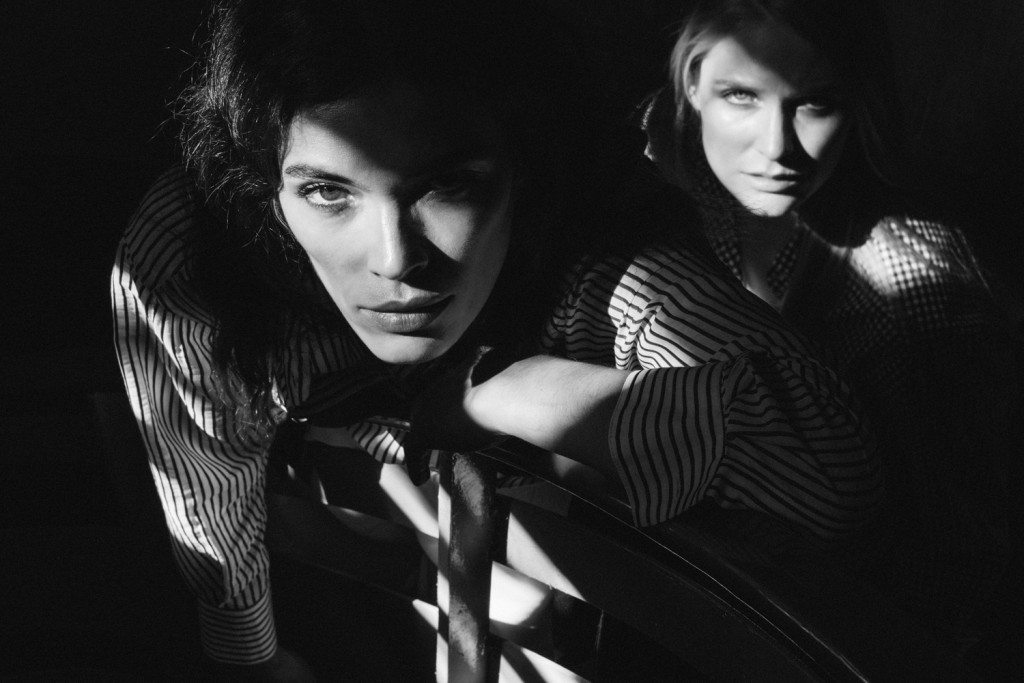
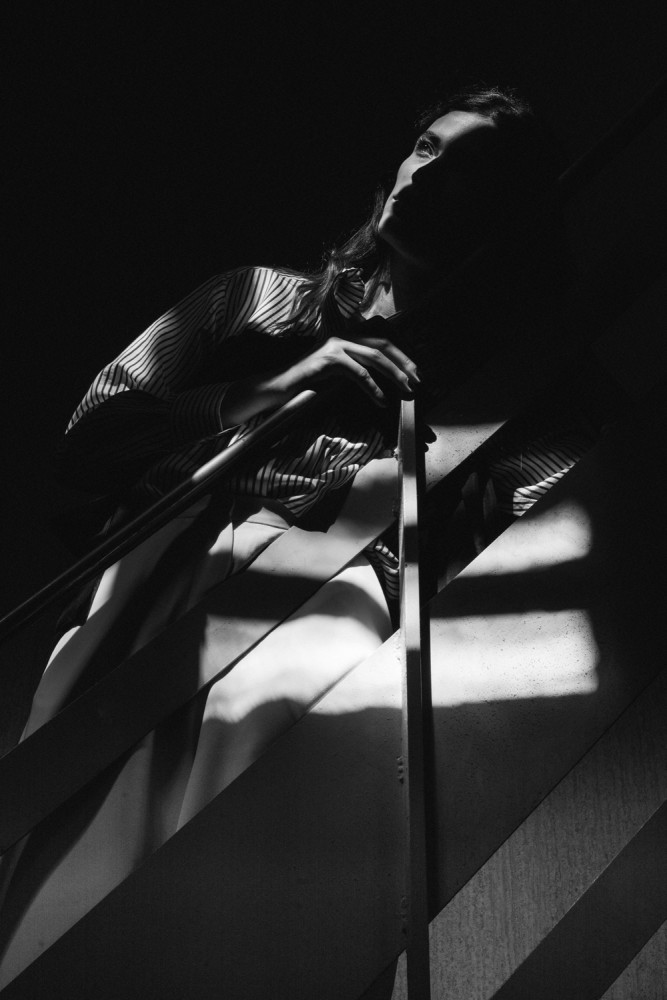
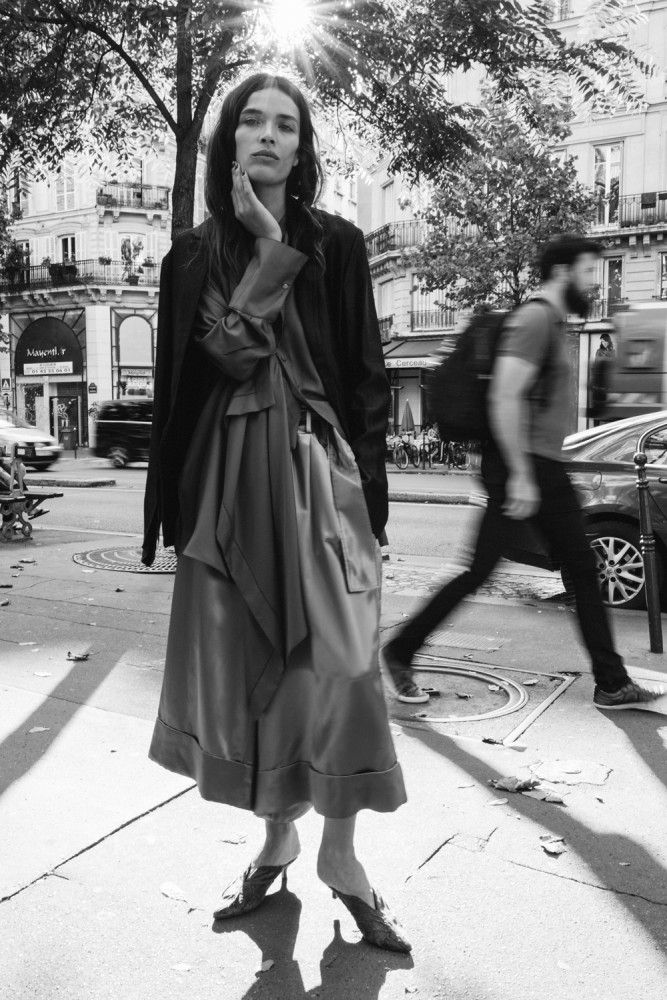
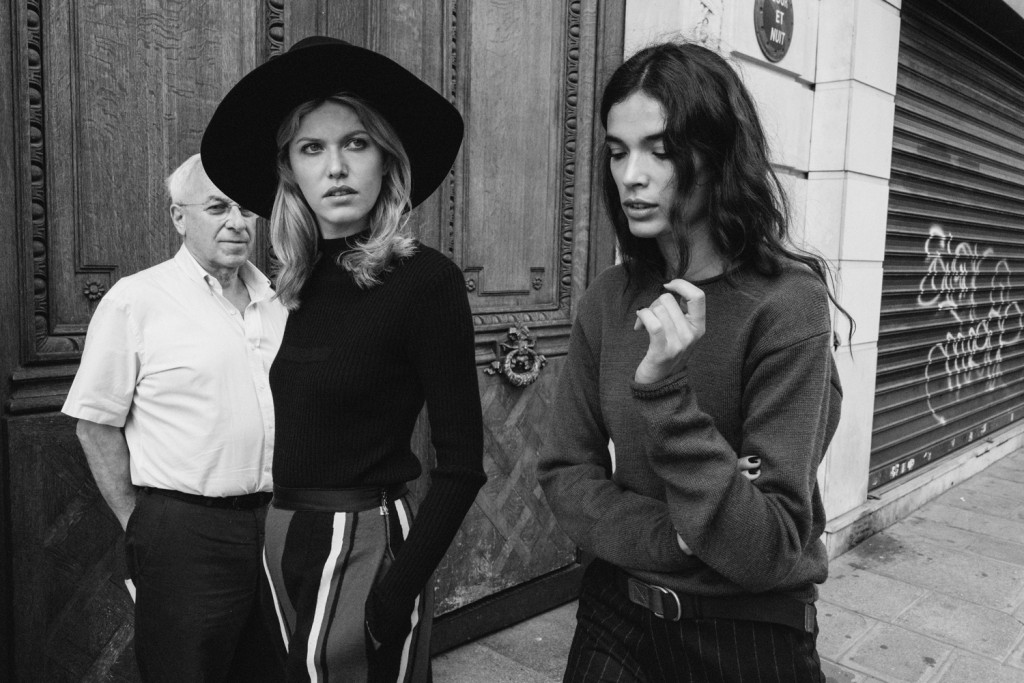
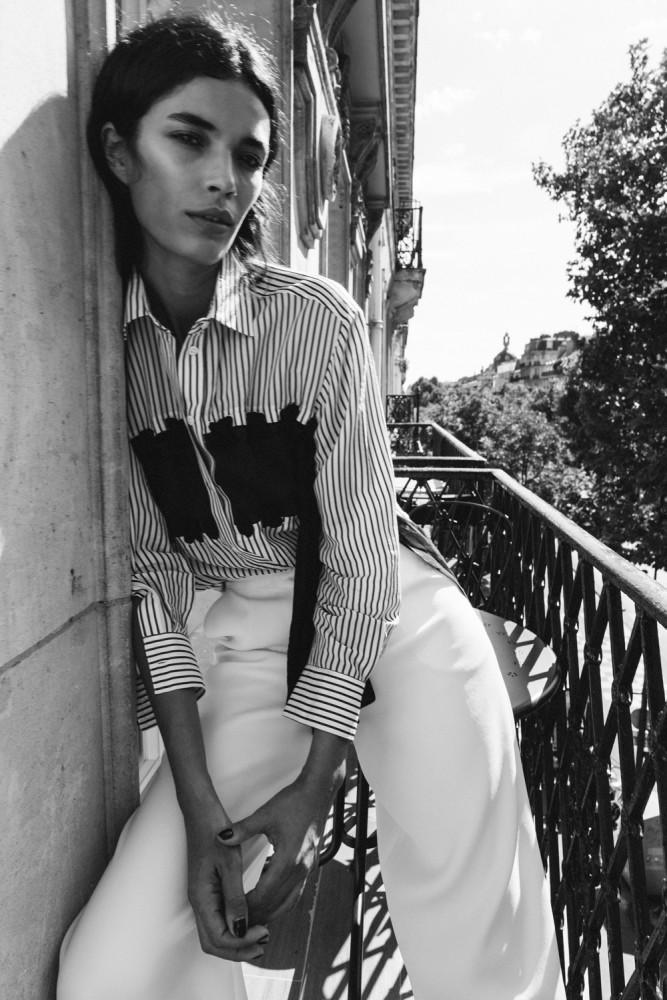
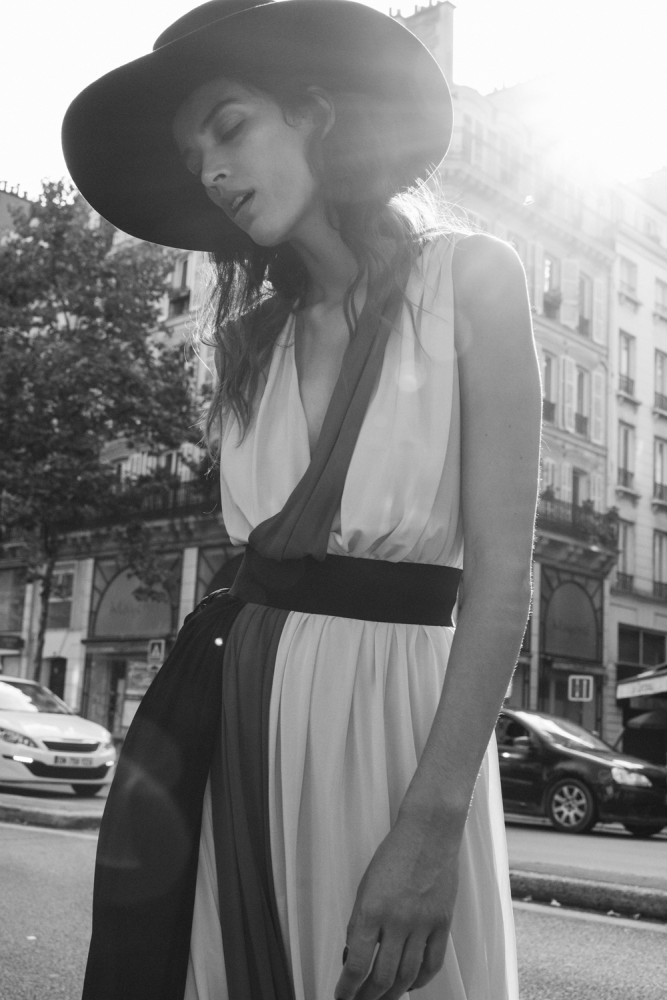
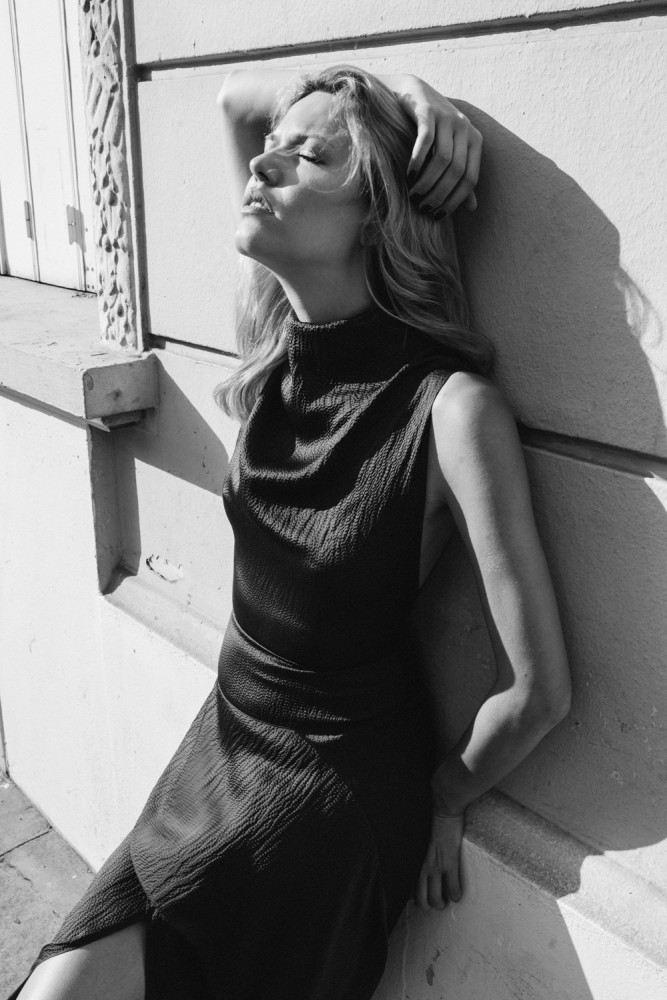
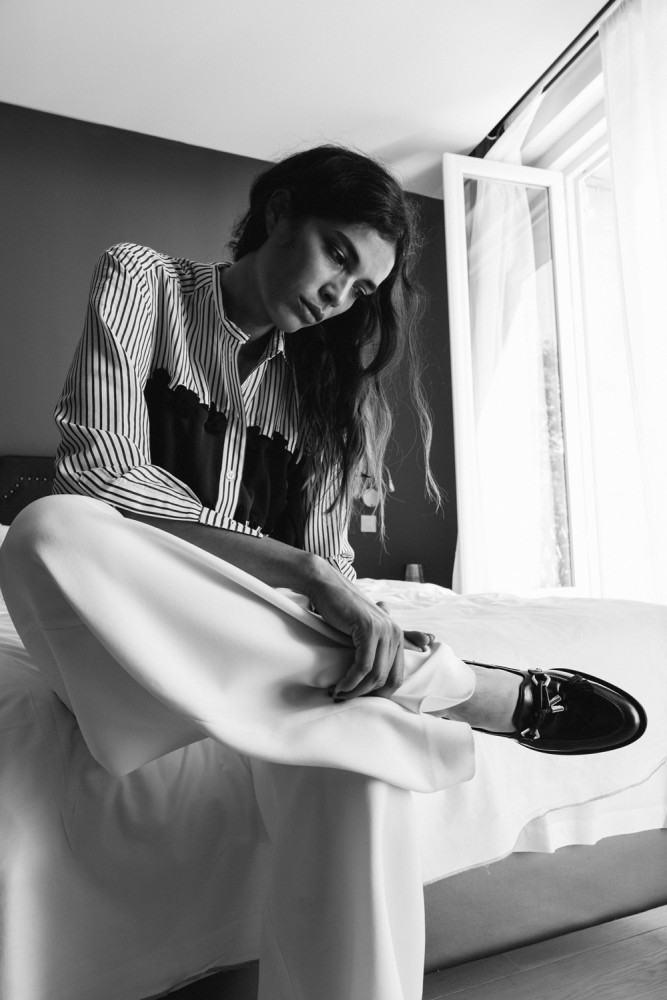
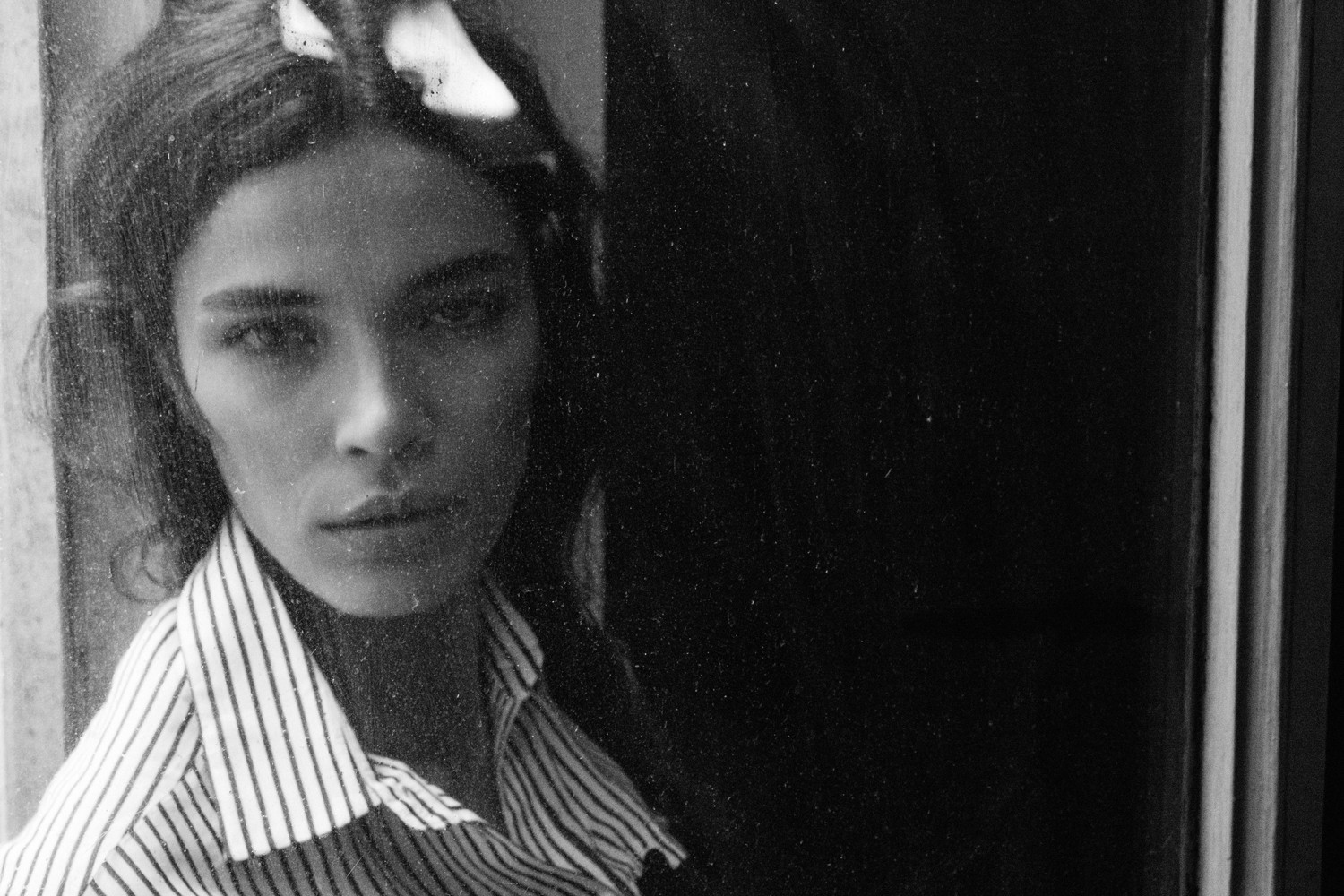
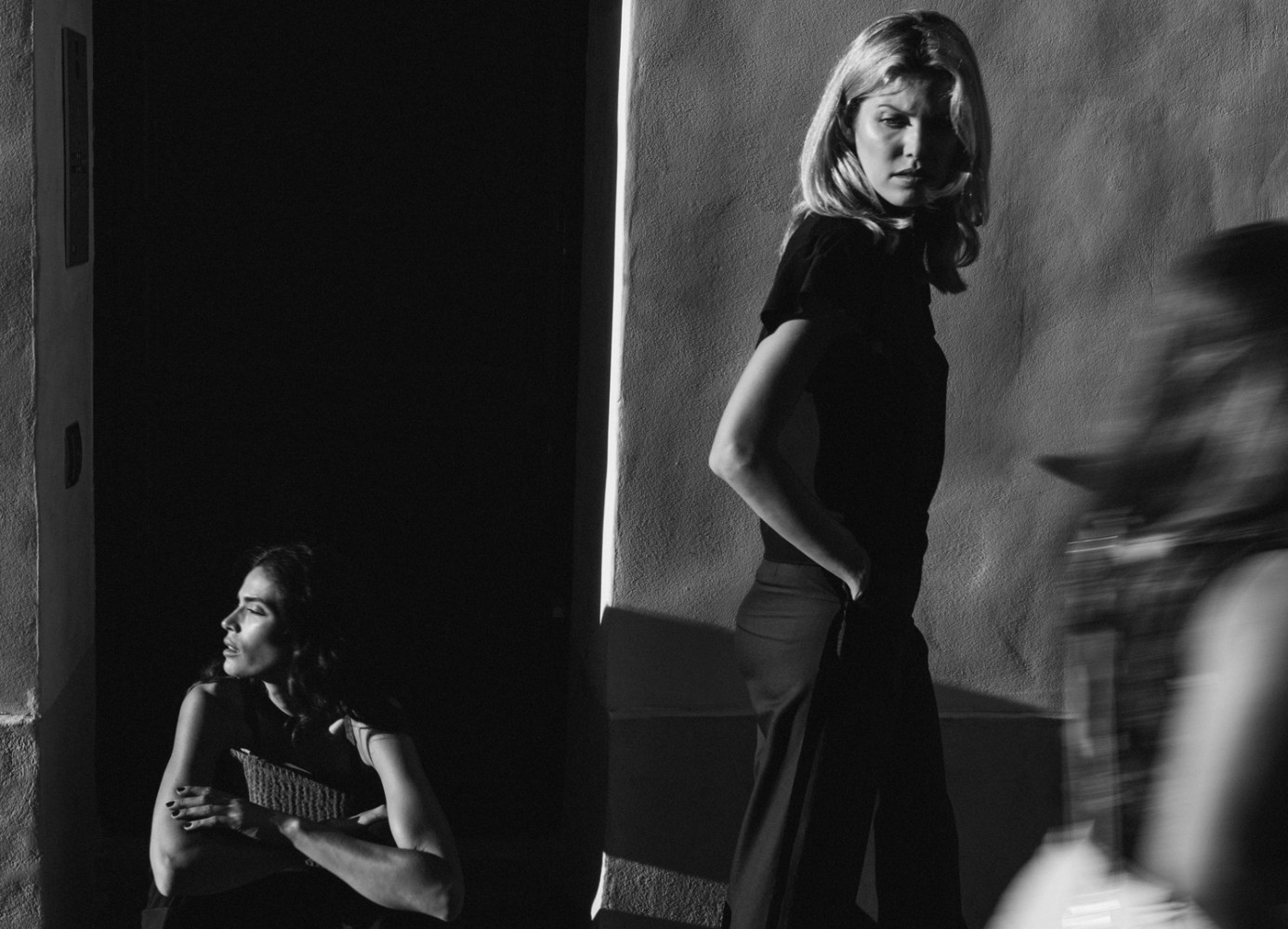
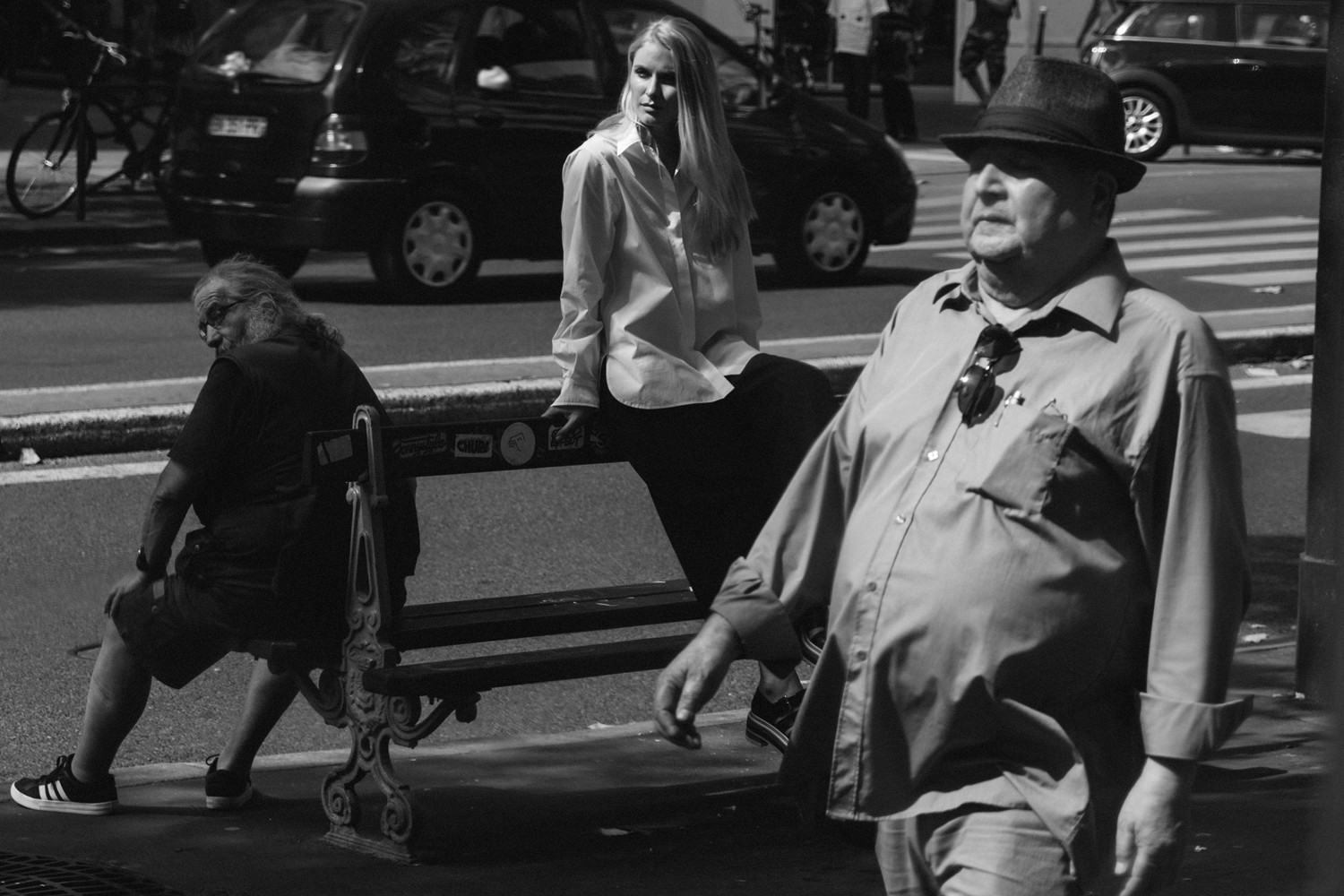
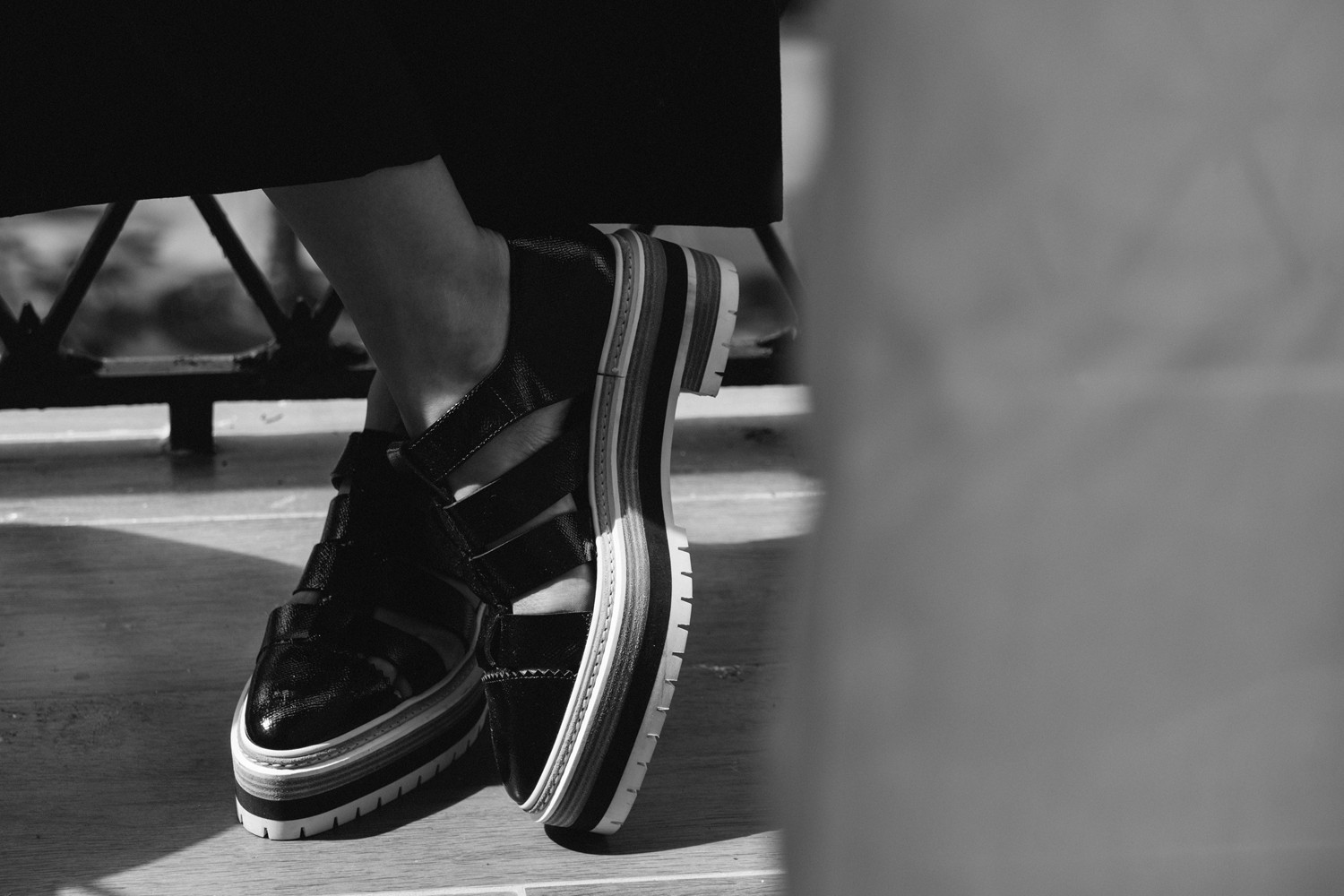
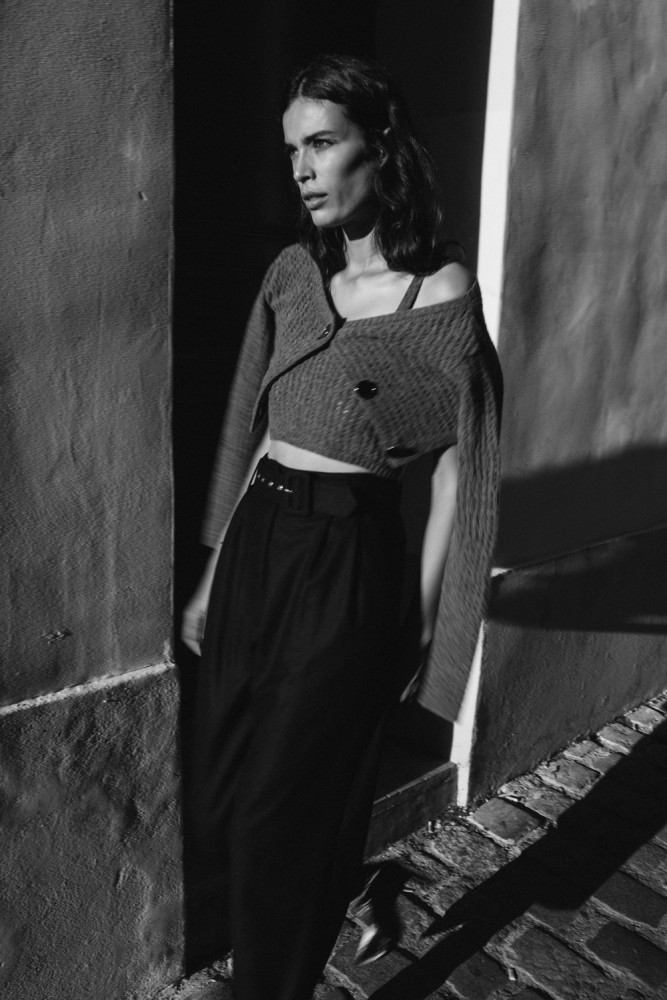
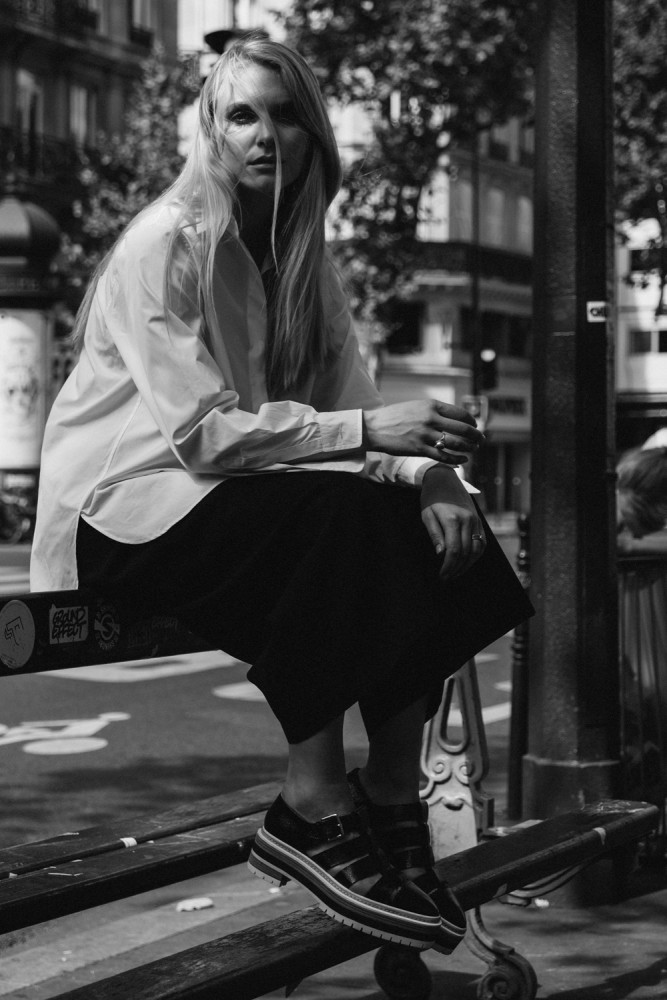
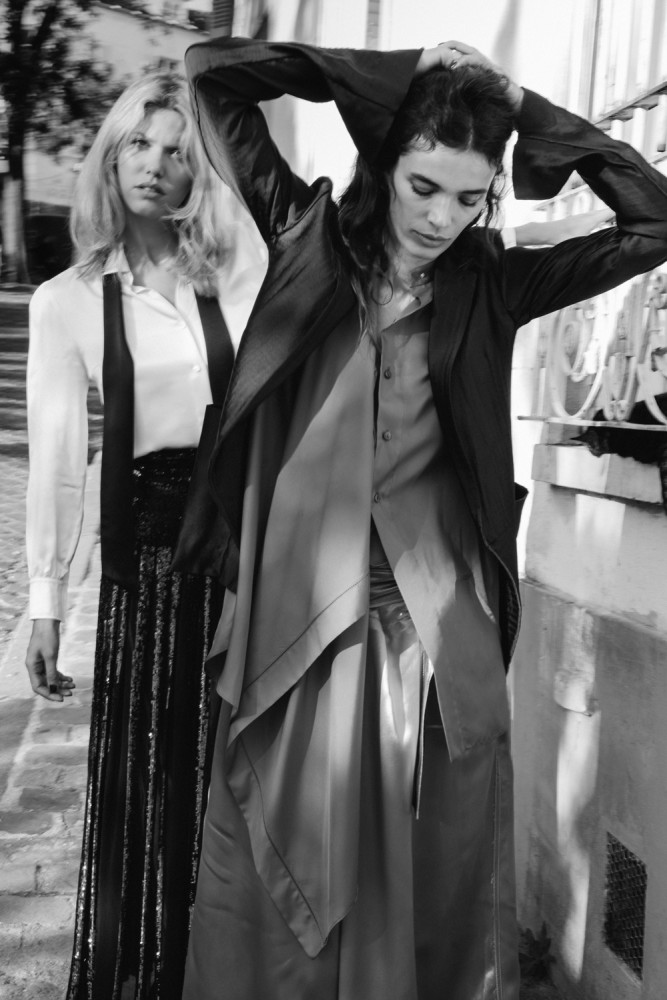
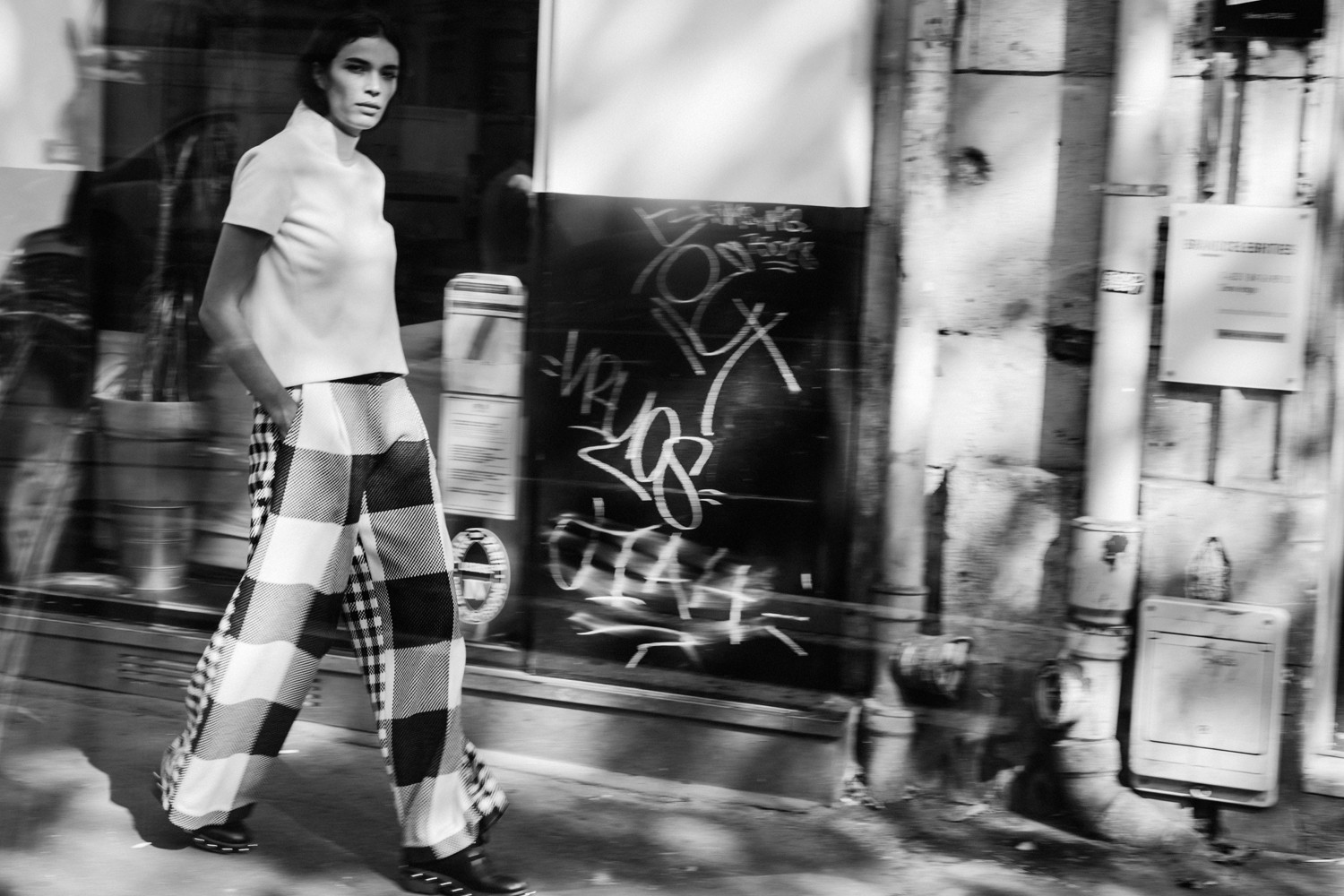
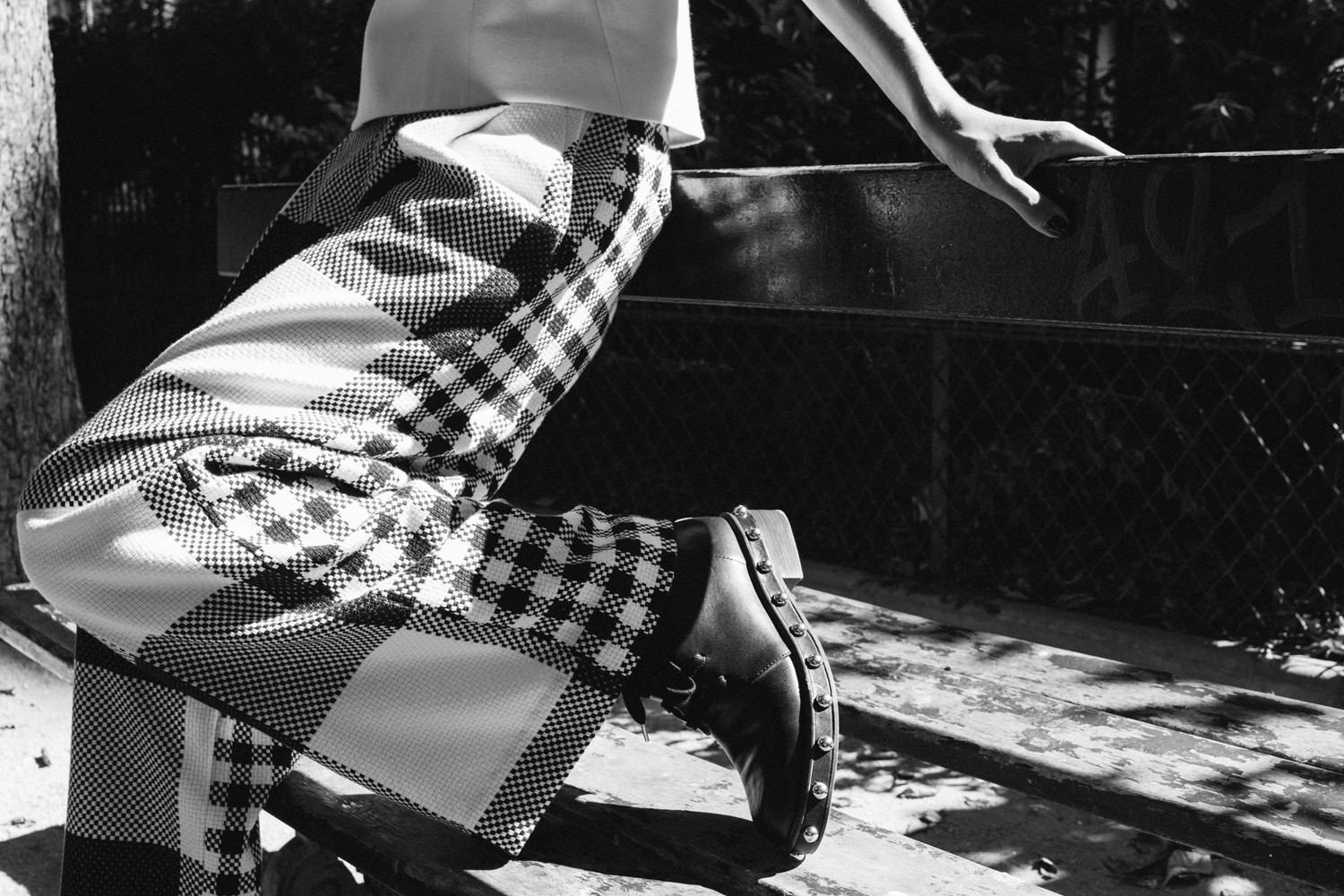
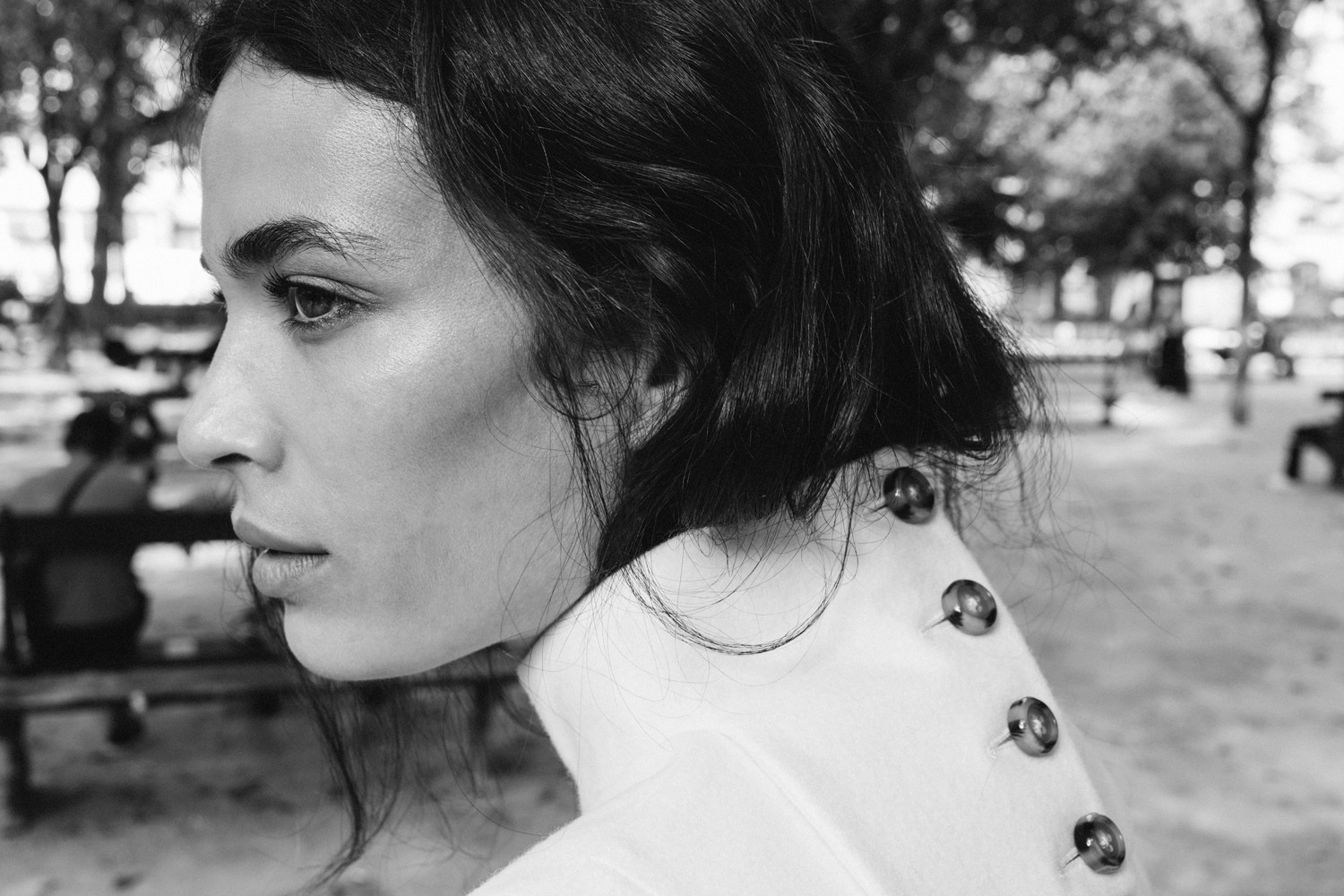

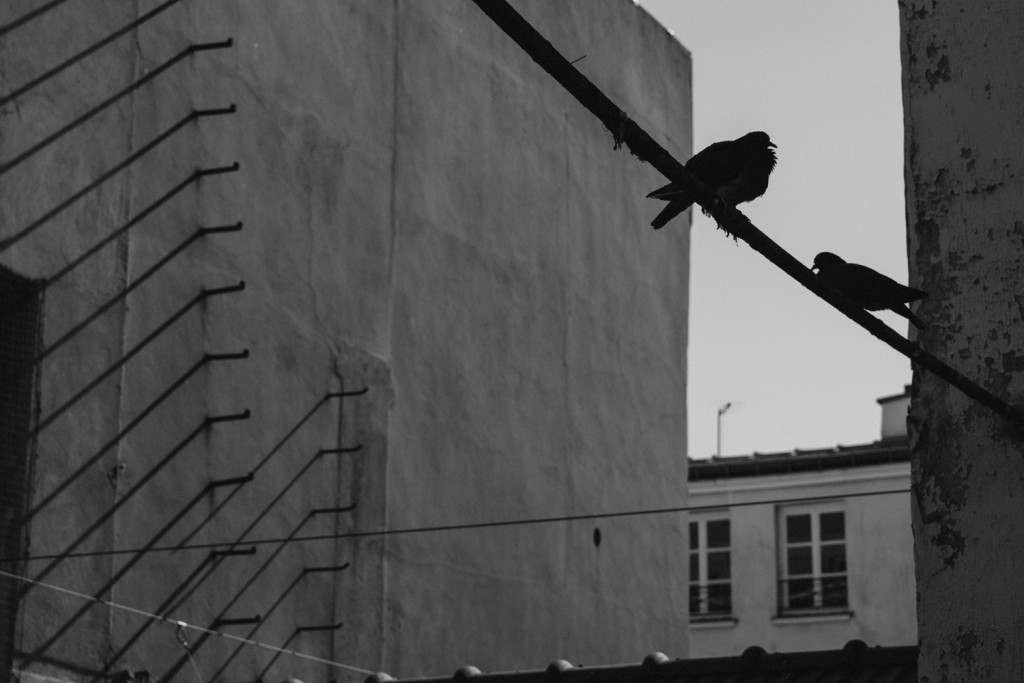




















INTERVIEW
Alex Lambrechts
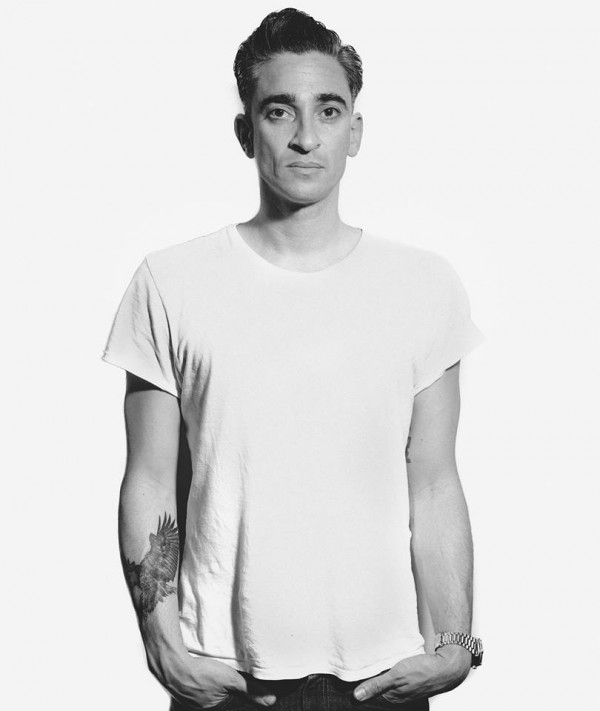
PHOTOGRAPHY Alex Lambrechts STYLING Dee Moran STYLING ASSISTANCE Yeghizaryan Lussine HAIR & MAKEUP Jehan Radwan PRODUCTION Rogues Agency PRODUCTION ASSISTANCE Neeta Phugra MODELS Marie Meyer, Amandine Elina, Jasmin Brunner CAMERA Leica SL with Vario-Elmarit-SL 24–90 f/2.8–4 ASPH.
With ‘Paris, Paris…’, Alex Lambrechts reveals his photographic preference – elegant black and white with a focus on the details, a melange of elements from street photography, dynamic street fashion, and an impressive use of light and shadow.
How did you get into photography? How did it start?
My parents owned photo-processing mini labs when I was growing up, and I worked in these stores whilst my friends were out having fun, surfing, chasing girls, all that stuff. Whilst they were out playing, I was helping my parents in the family stores. I did this until I was about 18, then left photography for a number of years (almost 20 years) until I reach 37. At which time, I wanted to test myself with something I thought would be very difficult, a way of kind of testing whether I was too old to learn new things (or do them well). Then, for a number of months and at first for around 80 to 100 hours a week, I taught myself, studying the masters of photography and various art movements and disciplines, always pushing myself. Next I worked my way through as many different film formats, cameras and processes as possible. I even dabbled in printing a little: I really wanted to learn everything I could about this art form, mainly focussing on the classics though...
You photograph very different subjects: fashion, portraits, street and also people. Can you describe your photography?
I have a discipline I follow, which says “when they zig, I zag”. Whatever everyone else is doing I try to do my own thing, even if it’s completely absurd. When I started, I didn’t see many people mixing street and fashion together; and I had a love for sixties fashion photography, but quite a disdain for new, meaningless or subject-less photography, for the sake of selling clothes. For me, if I’m going to sell clothes, why not get people thinking at the same time, why not embed some subtle subject matter? Hook them in! And guess what the result is? As you hook people into the image and get them to look further, they also, by default swallow the brand: it sticks with them. My clients like that. I want to create fashion photography which can sit on your wall at home in 20-50 years time; not like some clean and pushy advertisement. I don’t always get it right, and it’s not always possible with some brands; but luckily, nowadays, I can pick and choose my jobs. I love the ones where the client lets me do my thing: it’s also more pressure, but I love that! I’m often very nervous just before a shoot, because, when mixing random elements with a paid job, you aren’t always sure what you’ll get! You’ve got to be on your toes, and have a lot of tricks up your sleeve...
Do you prefer to work in monochrome or in color?
Monochrome, monochrome, monochrome... But when I shoot with colour, you might notice I’m all about the light: there’s a monochrome approach to my colour work which I think is quite evident. I shoot mainly for shadows and highlights...
You travel a lot, and while you’re travelling you visit famous photographers such as Nobuyoshi Araki. How was it to be with him? What impressed you?
Wow! He’s such a legend! A true artist! Very energetic and inviting! I wanted to use my time with him to learn more about him through our portrait session, and I learnt a lot more than I could ever bargain for! He represents who and what he is in every single element – from his hair and glasses, to his nails and the texture on his trousers. It’s all there if you take the time to really see. He’s one of the most interesting people I’ve photographed – so much passion, very warm, and inspiring! I’m very fortunate to have been granted that special session with him!
For the S magazine you photographed a black and white series in Paris. What’s it about?
This Paris story was a return to my classic monochrome work. I felt like I had been shooting too much commercial work for everyone else and was getting away from my classic look. I wanted to shoot a fashion shoot, focussing on details (commercial), but also mix in street, movement and LIGHT! It’s all about light. The Paris shoot is very ‘me’.
You photographed with the Leica SL, and you filmed a ‘making of’ video with the Huawai P10 Plus. Did this equipment fulfill your expectations?
The Leica SL it my current favourite working camera. For a long time I used the Ms, which were my all time favourites, (both in film and digital); but when I raised the SL to my eye, it was love at first sight! I had to have it. I started using it with the M lenses; but then, when I tried the SL 24-90mm, I was hooked on that! It gives me great confidence knowing exactly what I’m going to get, and being able to adjust focal lengths in split seconds as things present themselves, specially with my style, as I need to be adaptive. The SL allows me to be much more flexible and free when shooting commercially. And the viewfinder is sublime!!! As is the entire feel and shooting process. The Huawei x Leica collaboration just gets stronger and stronger with every new model. It’s astounding to me the quality I can get from photographing on the Huawei Mate 10 Pro phone. It wont replace my SL or Ms, but it’s pretty cool that I can pop it out and mix in shots or even shoot an entire video with it if needed! I’ve even used it for magazine work. I’m particularly impressed with what Leica and Huawei are doing with A.I. and how they’ve incorporated it into the photography process on these devices. It’s truly mind blowing to see what they are achieving. I mean the phone corrects things and selects adjustments in split seconds and covering multiple areas of an image. It’s much faster than me, and remembers to do things I might often forget, or be too lazy to tweak in post!
You are an ambassador for Huawei as well as being a Leica photographer; what do you think of smartphone photography; when do you work with professional equipment?
I’ve been working with Huawei since the P9 version with twin Leica cameras, as I mentioned above. I’ve shot BTS fashion videos on these devices for professional use and am also planning to shoot entire editorials with it. The files are fantastic as jpegs straight out of the device; but I also have incredibly detailed RAW files in case I want to play a little more...
What photographic projects do you have for 2018?
I continue to work as photographic director of THE FALL magazine, and also have a number of HUAWEI projects in the pipeline. I’m pretty picky about the work I do these days, and as such am looking to do a lot more personal work in 2018. I want to play a little more with abstraction and art photography, including a bit more portraiture if and when the right subjects present themselves, or I seek them out ☺. That’s if my agent gives me enough time off, as I’ve been getting pretty busy these past couple of years. I’m not complaining, but do realise that it’s very important for me to balance my commercial work with as many personal projects as possible...